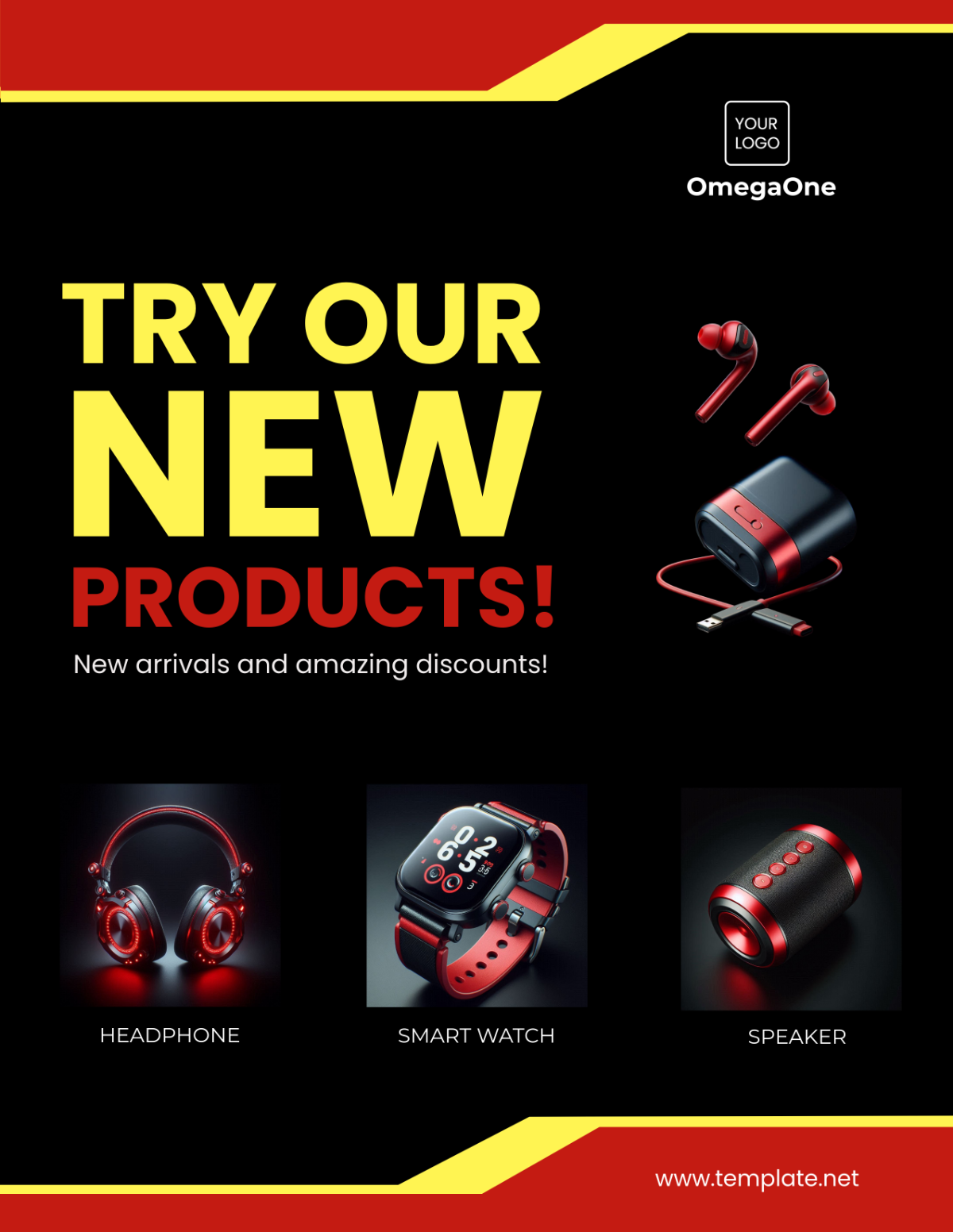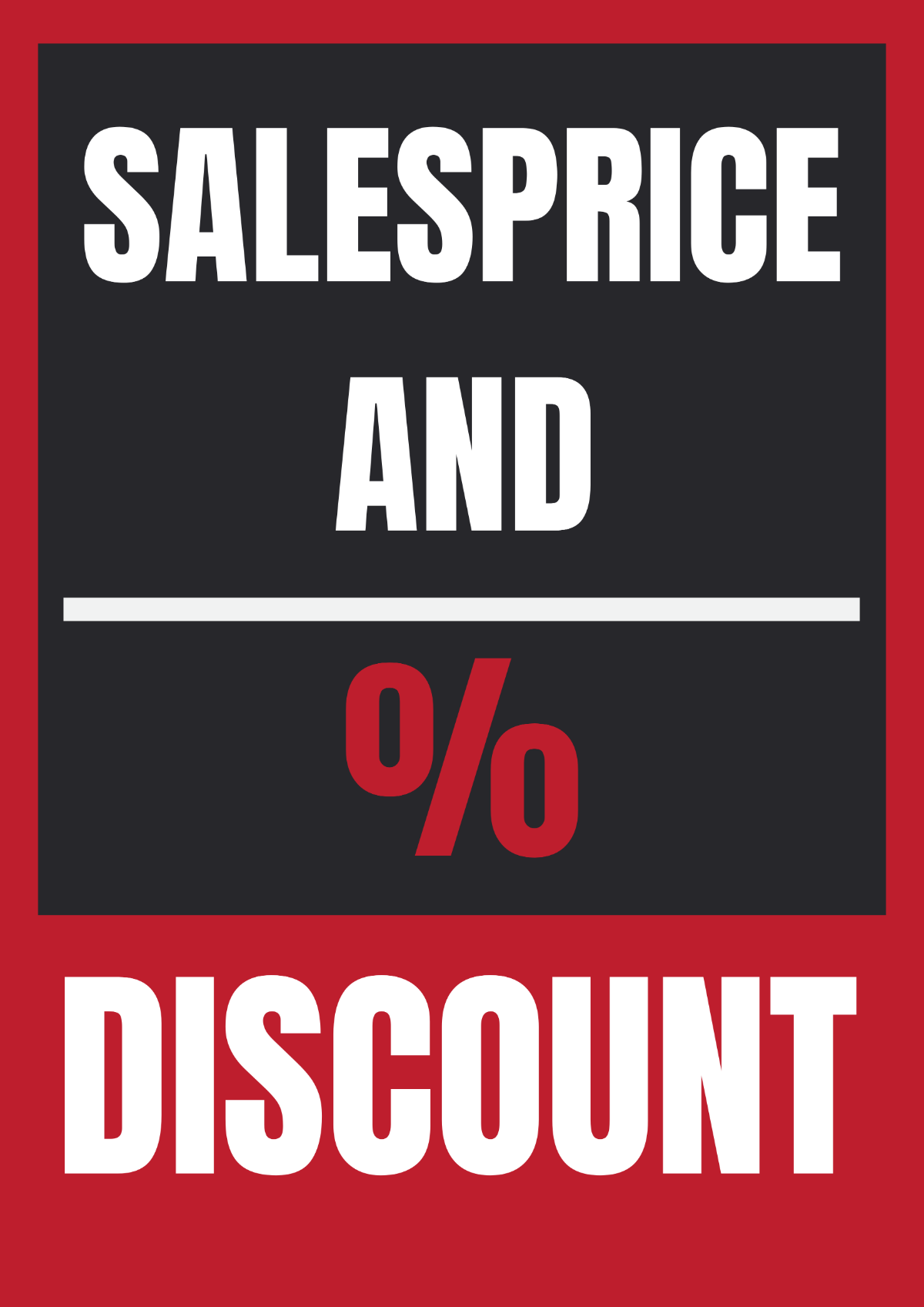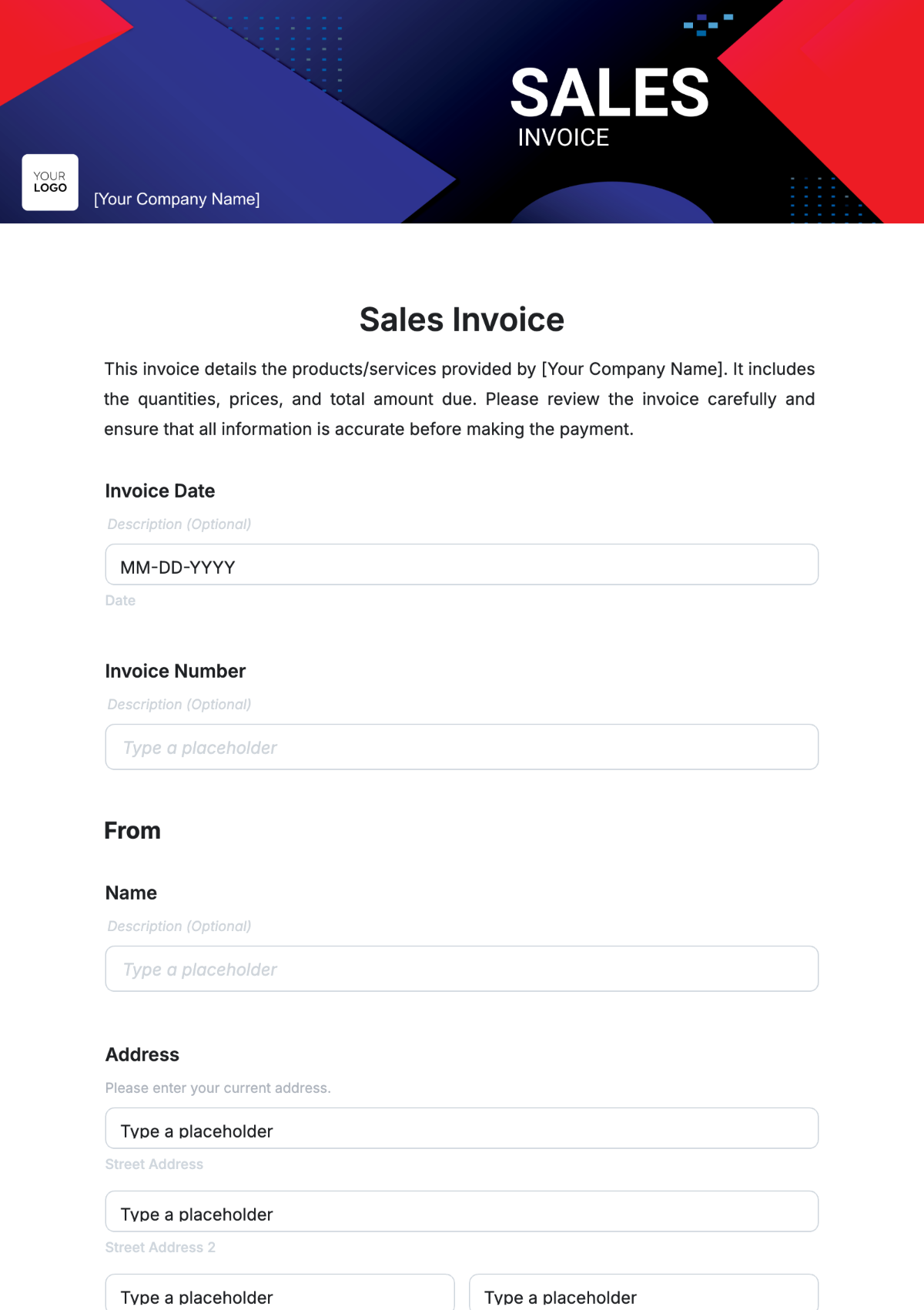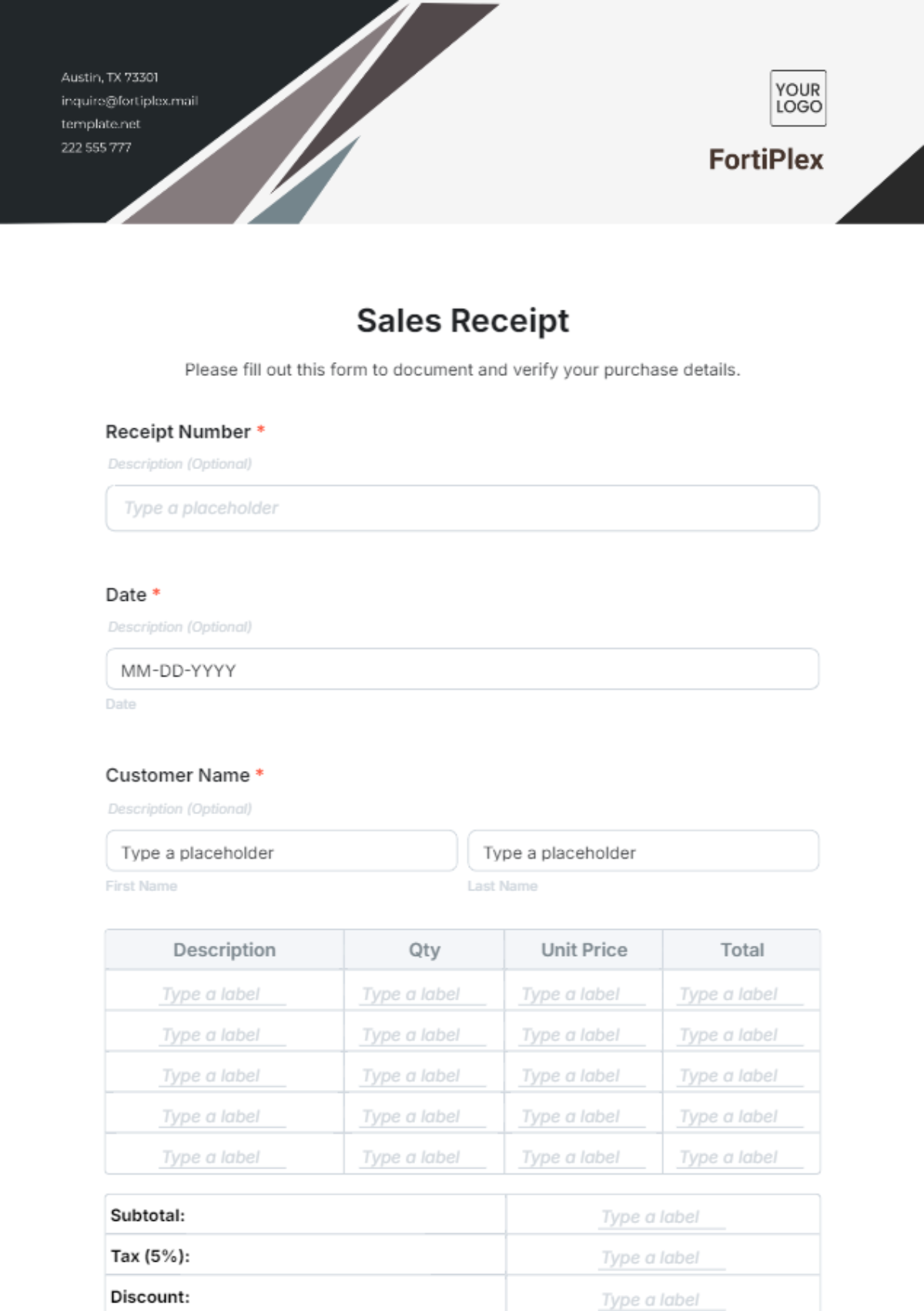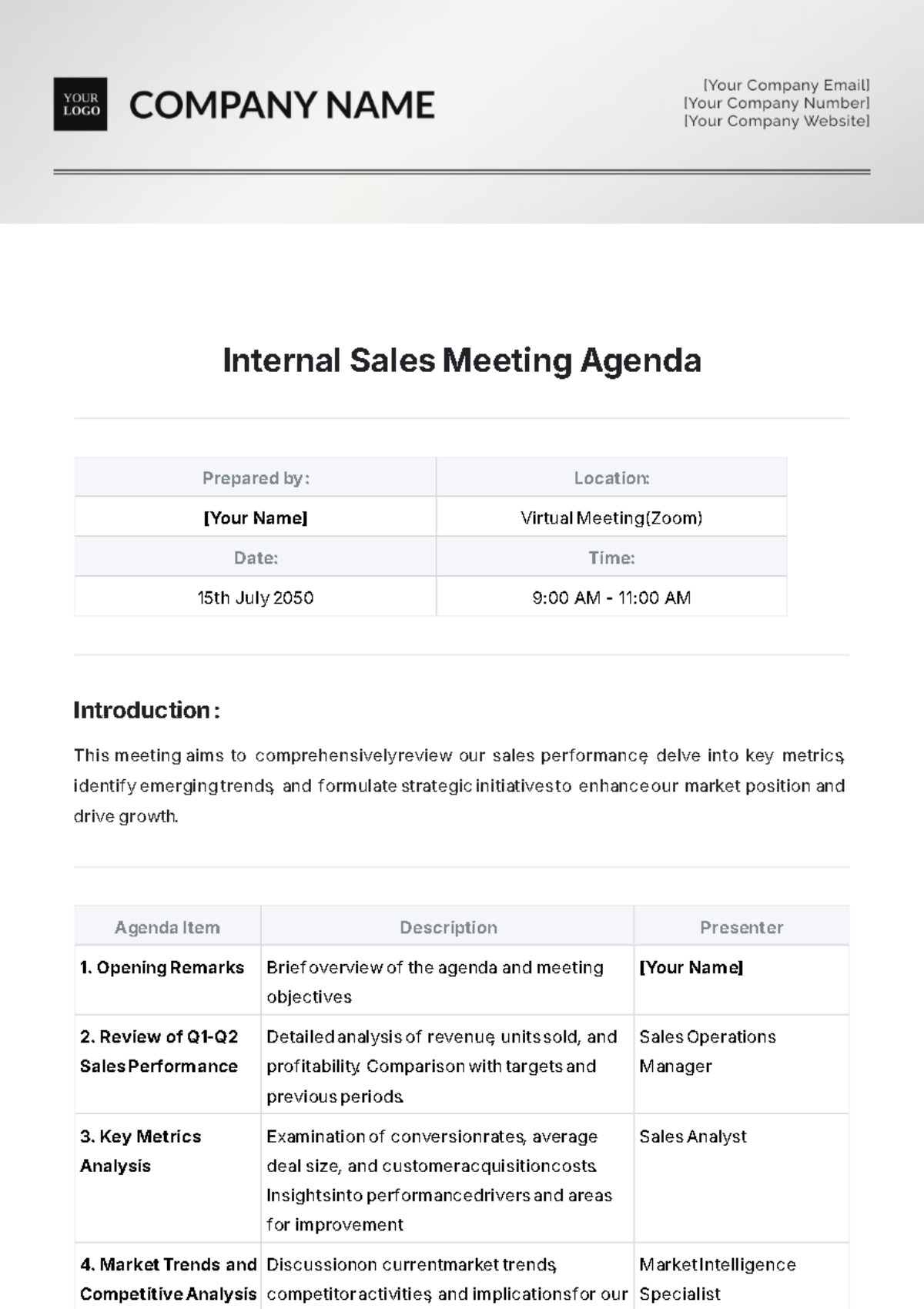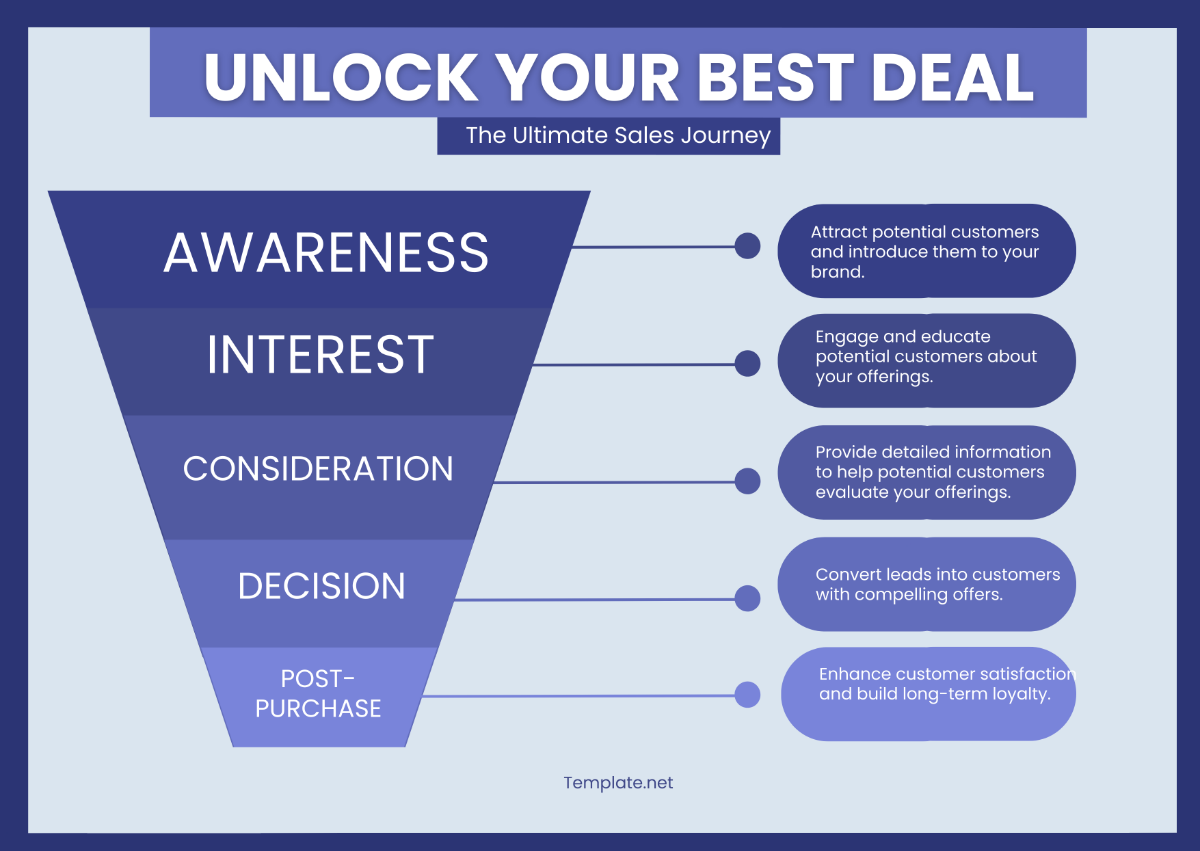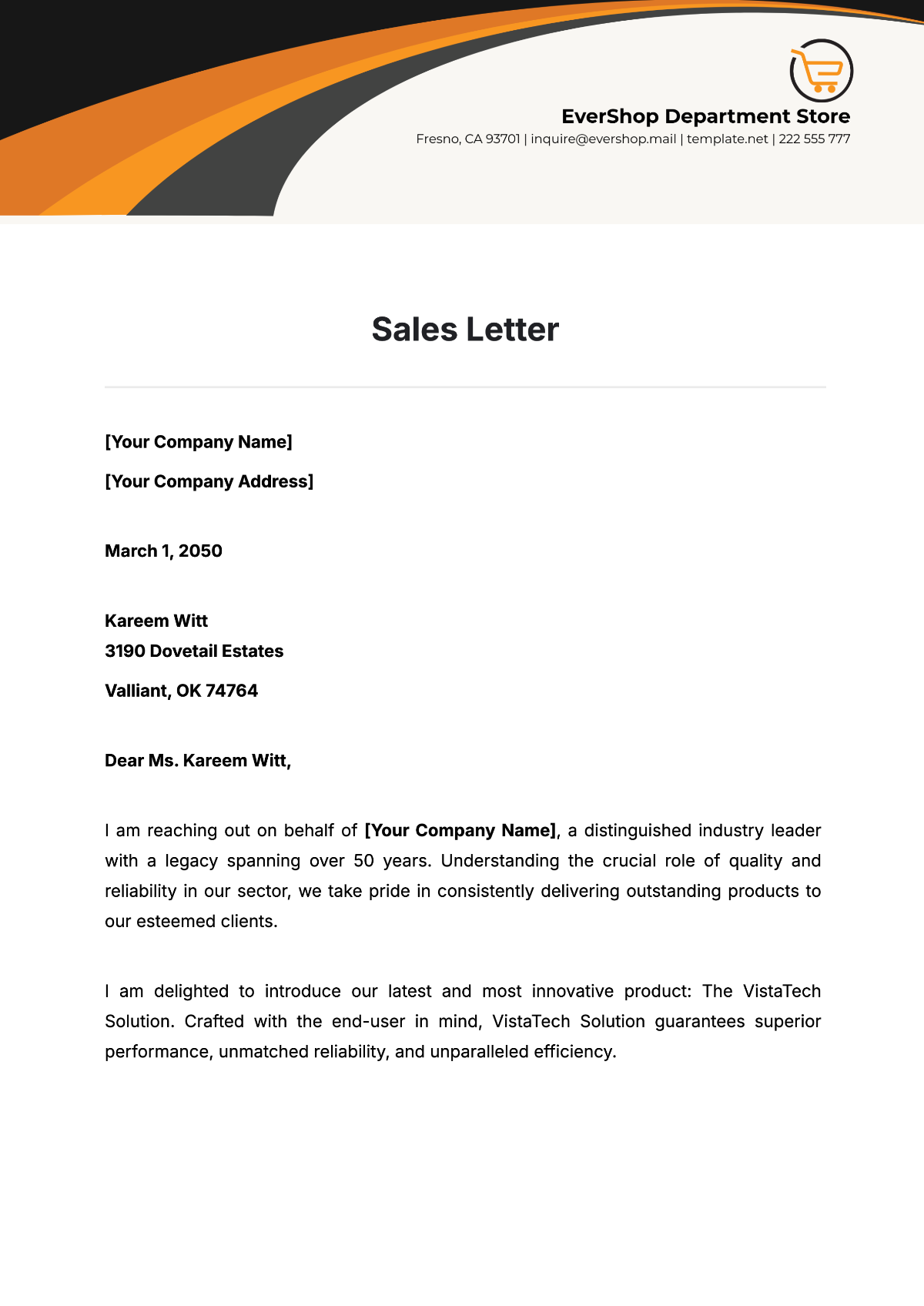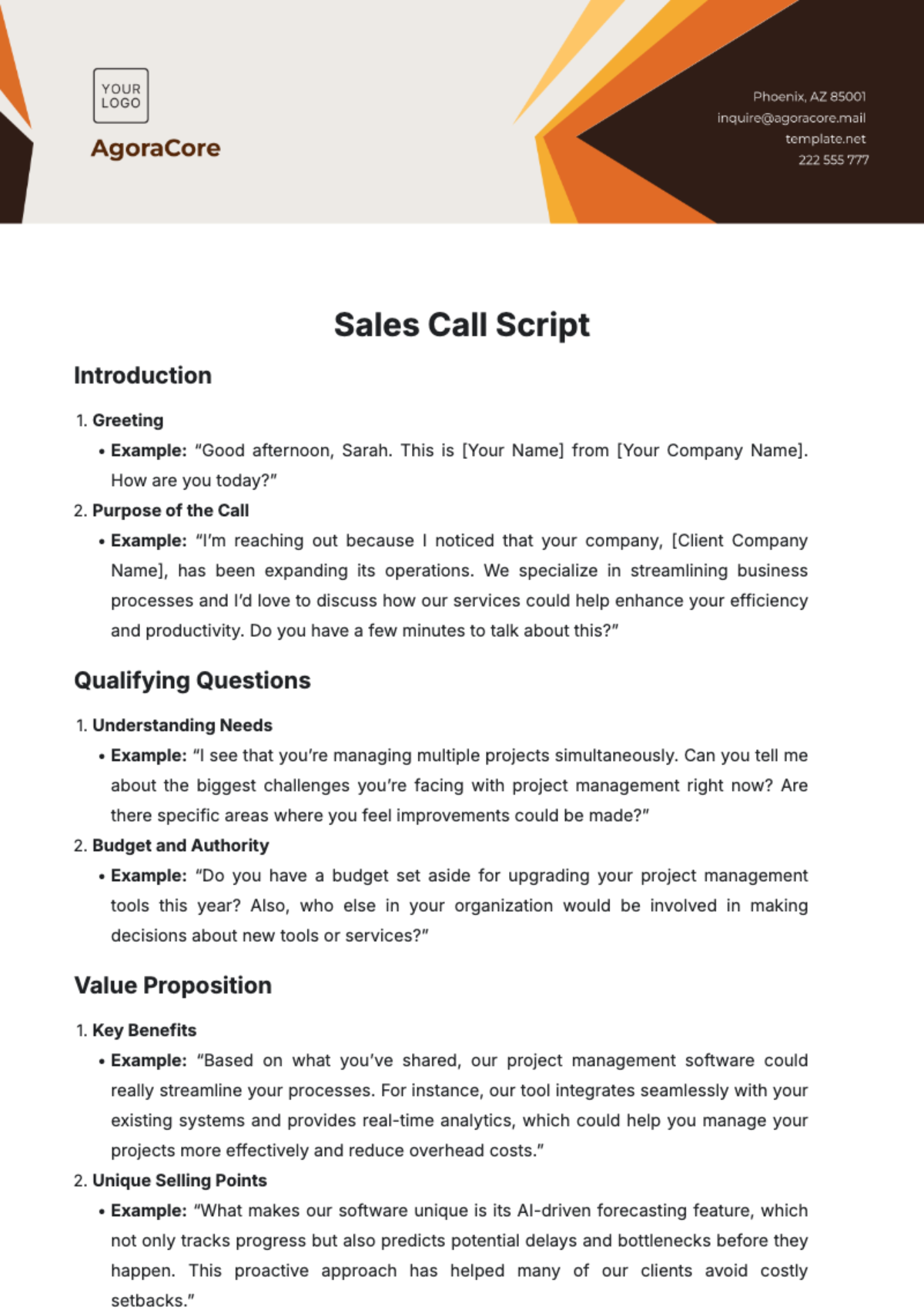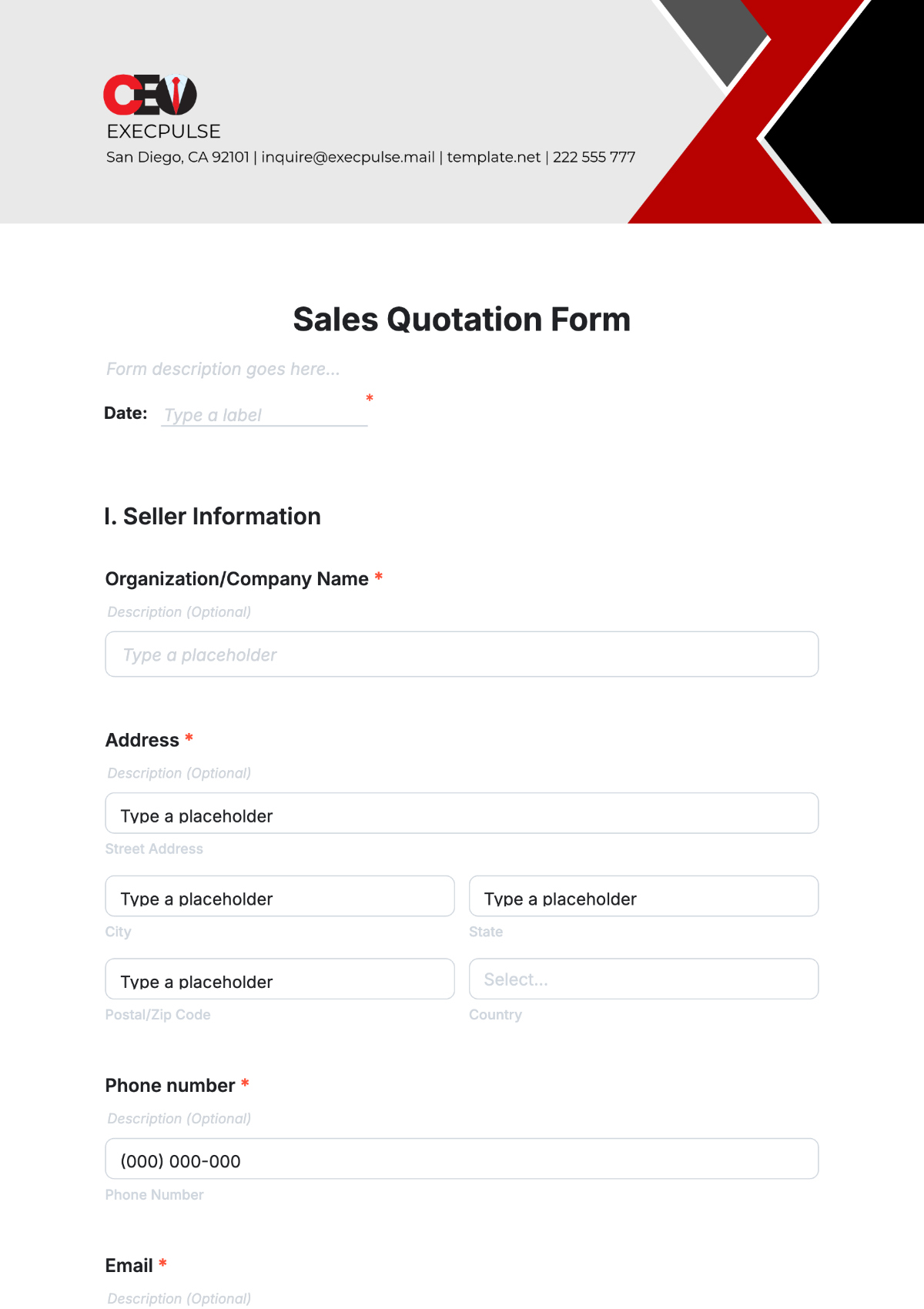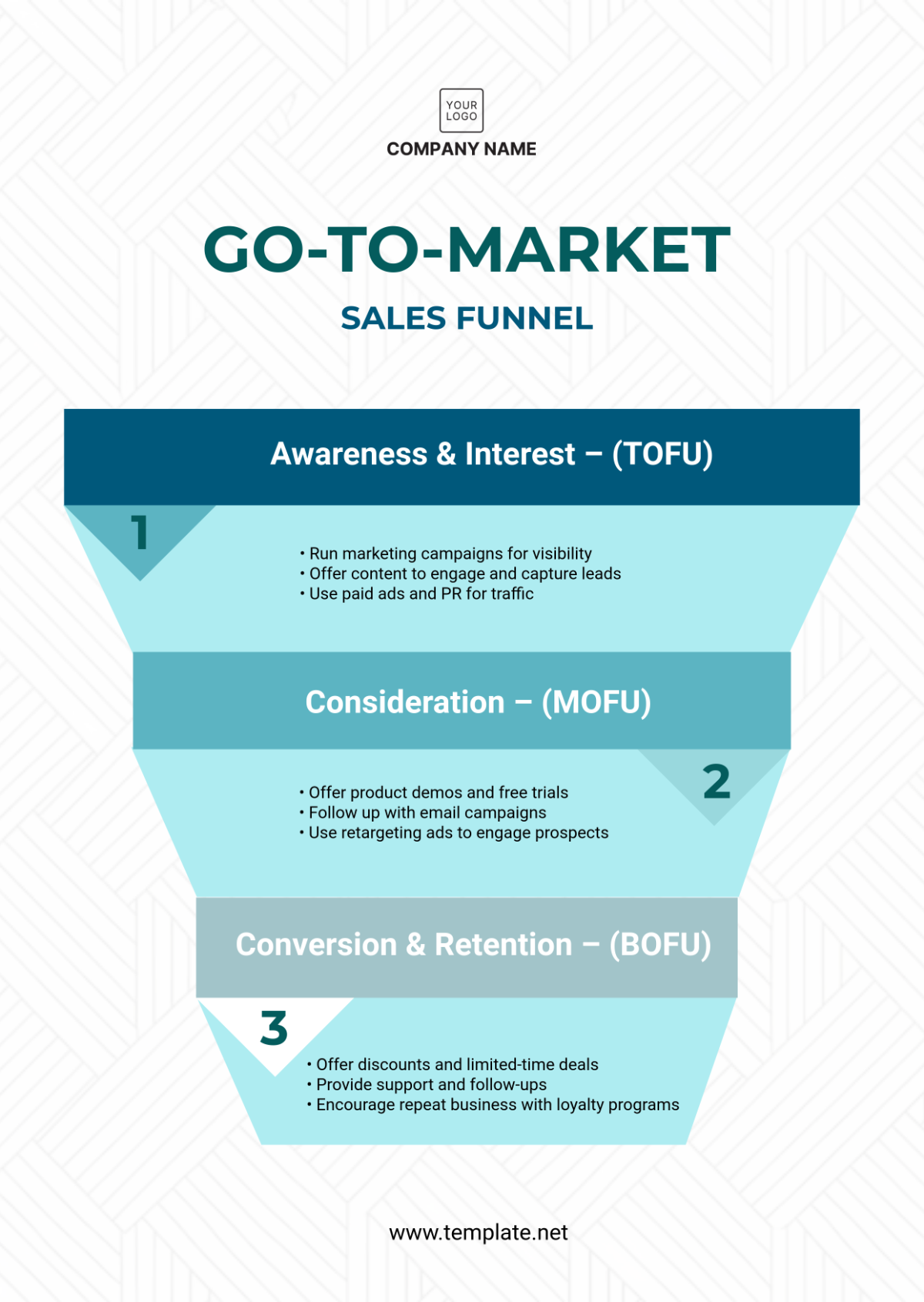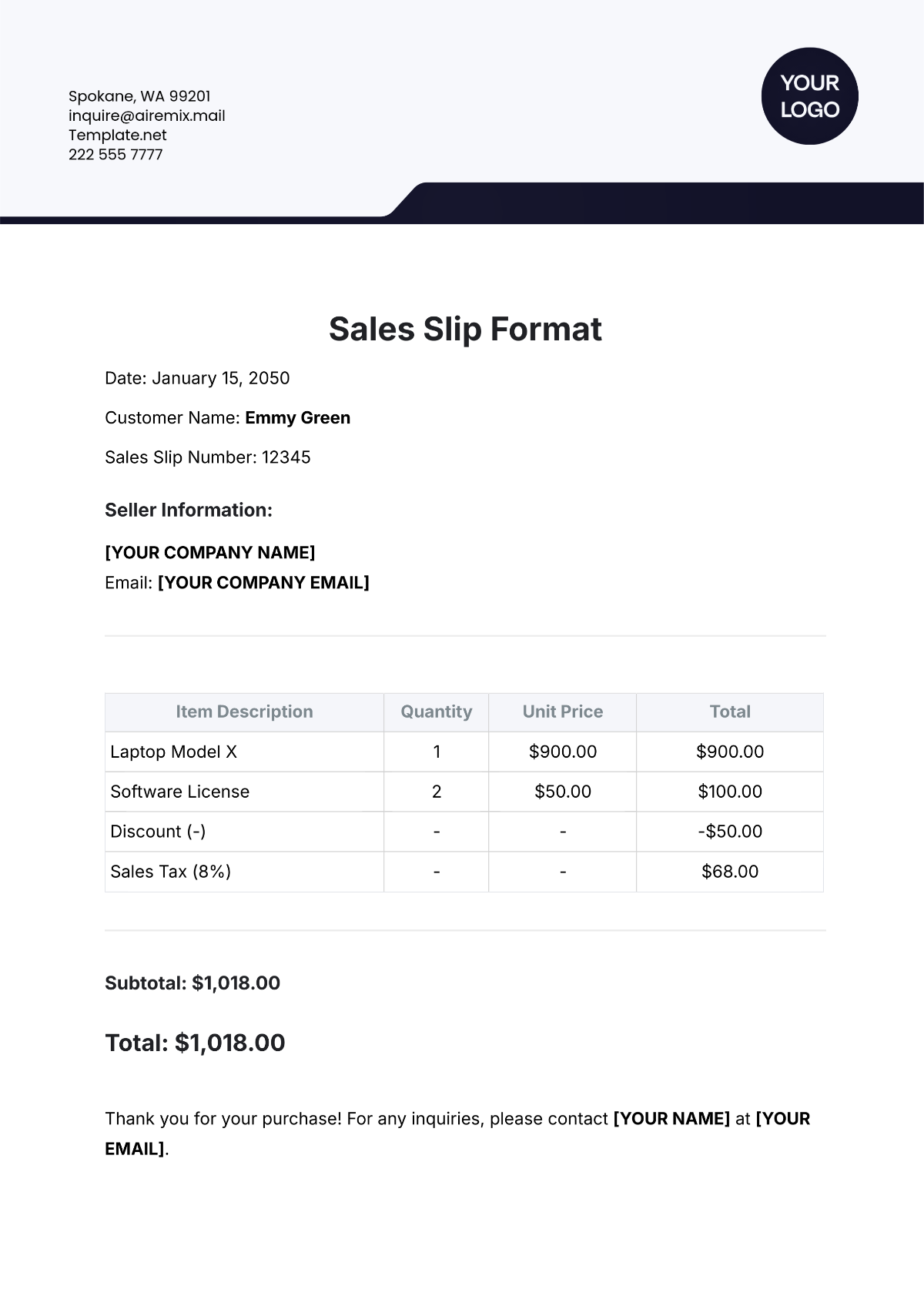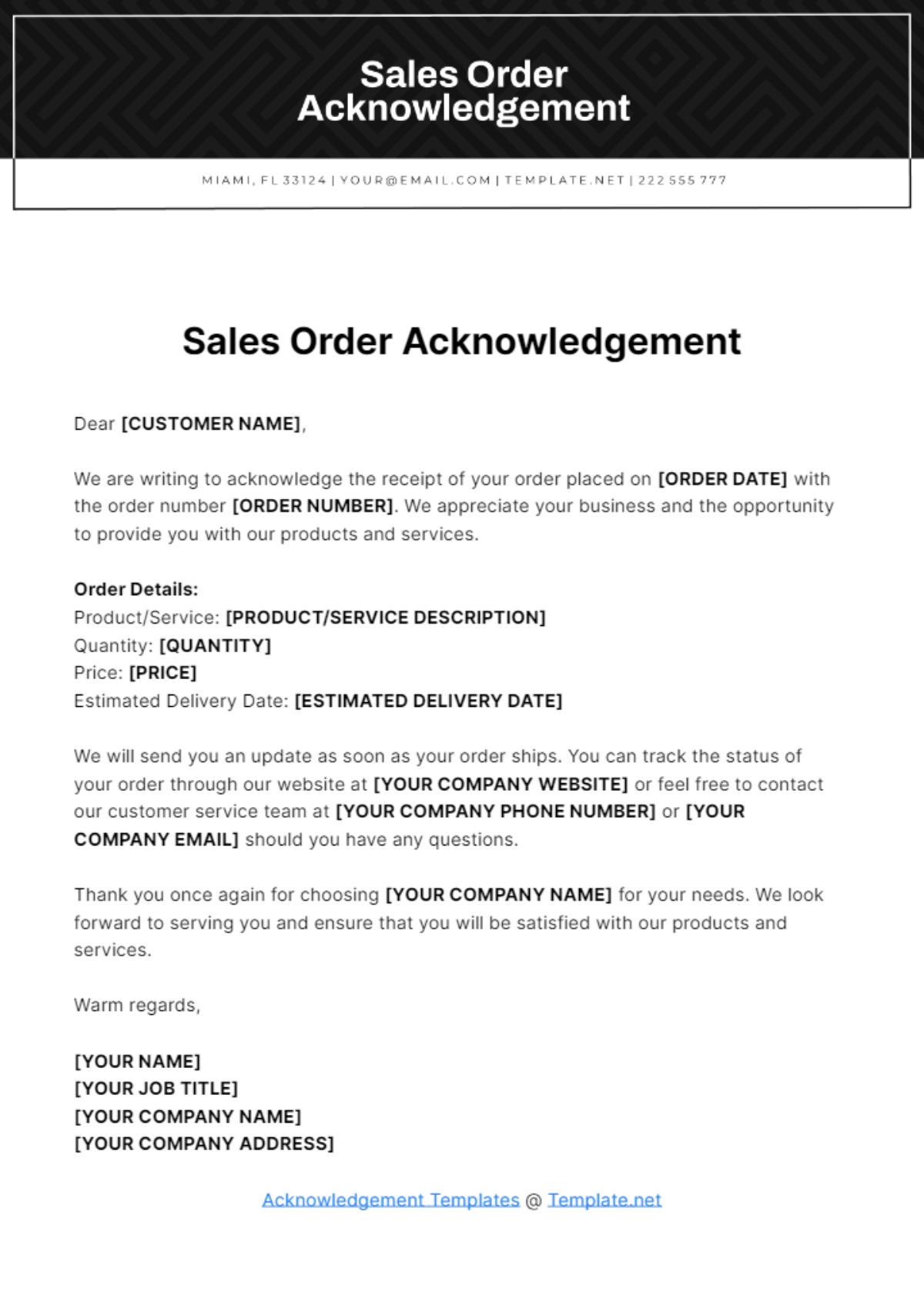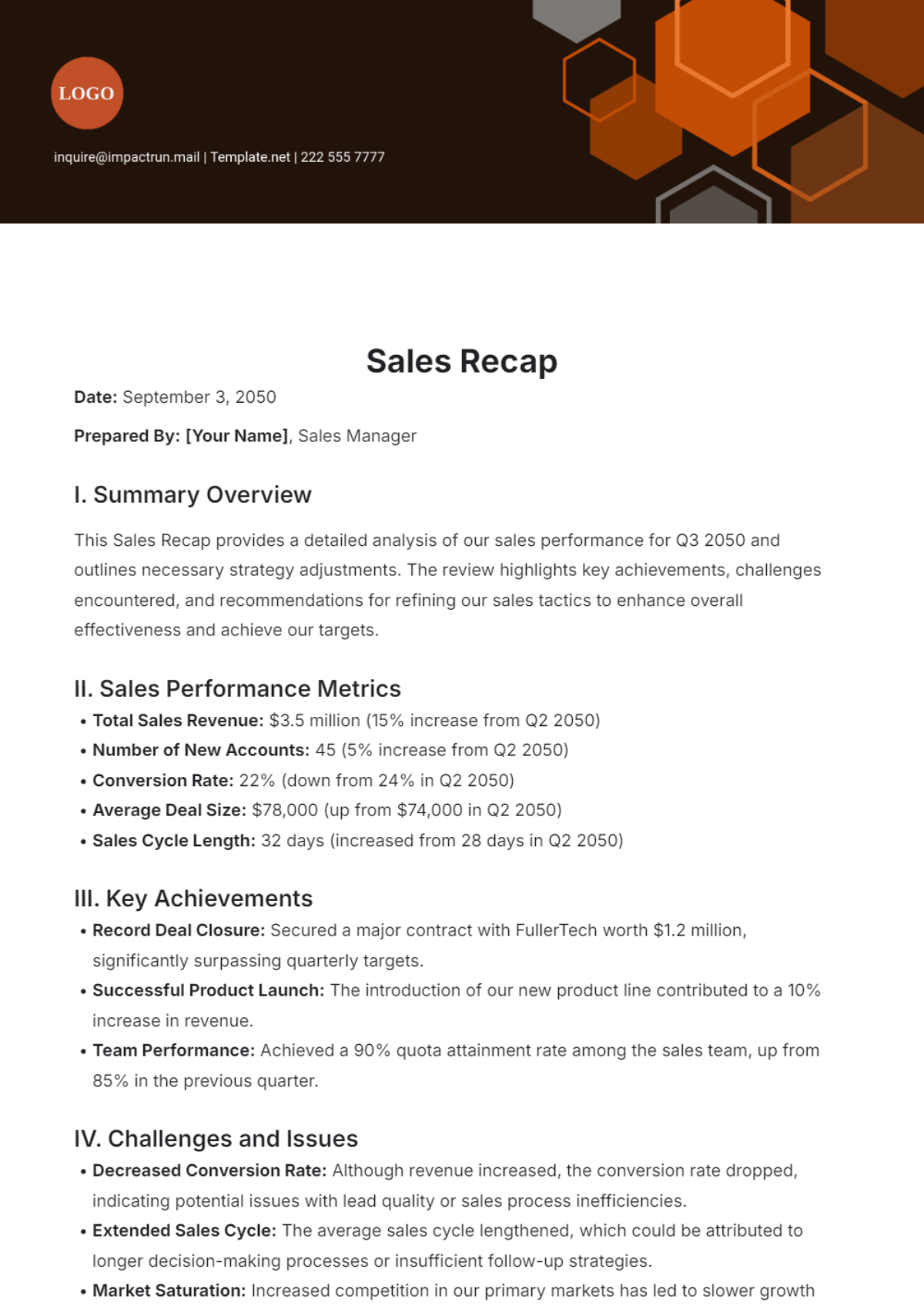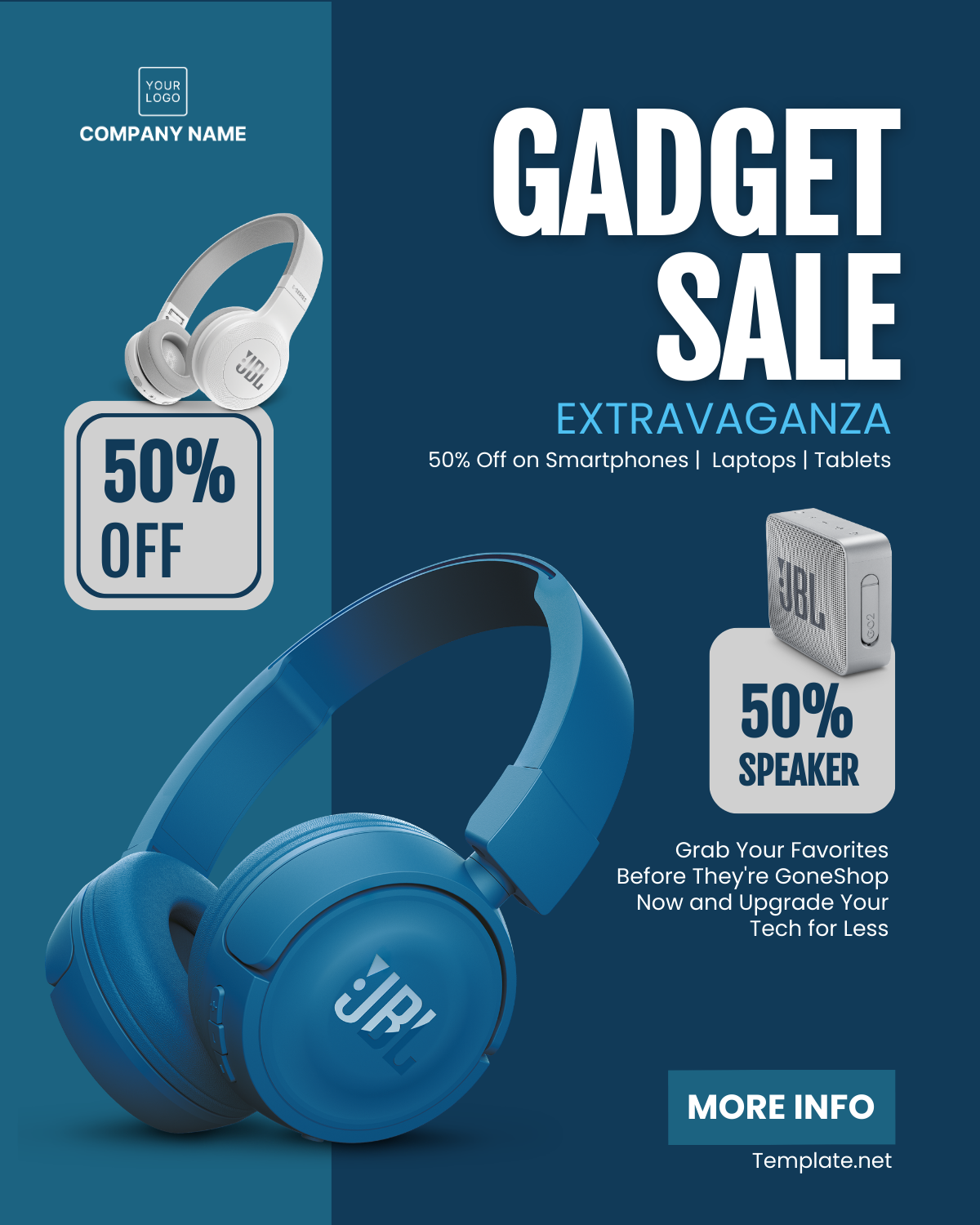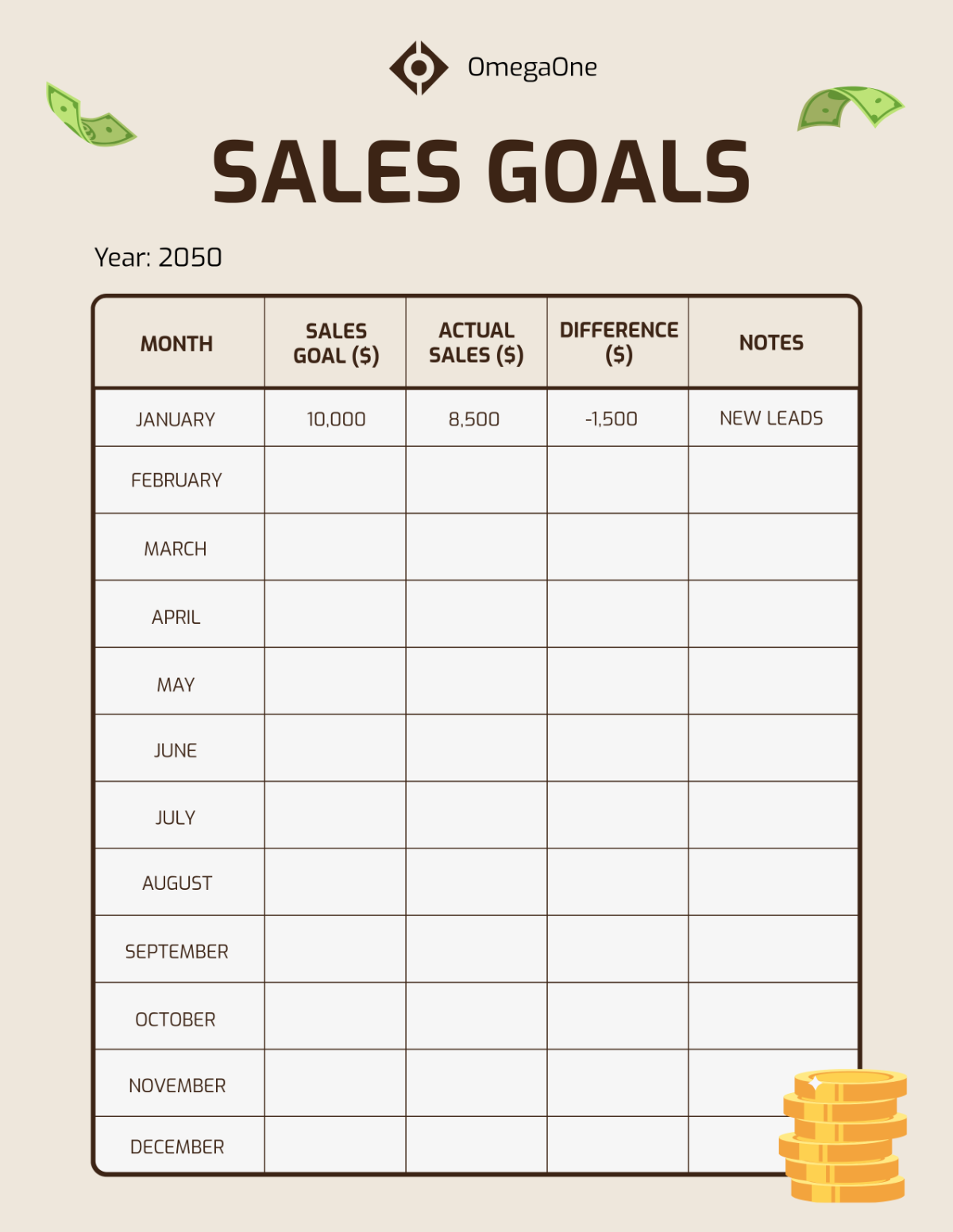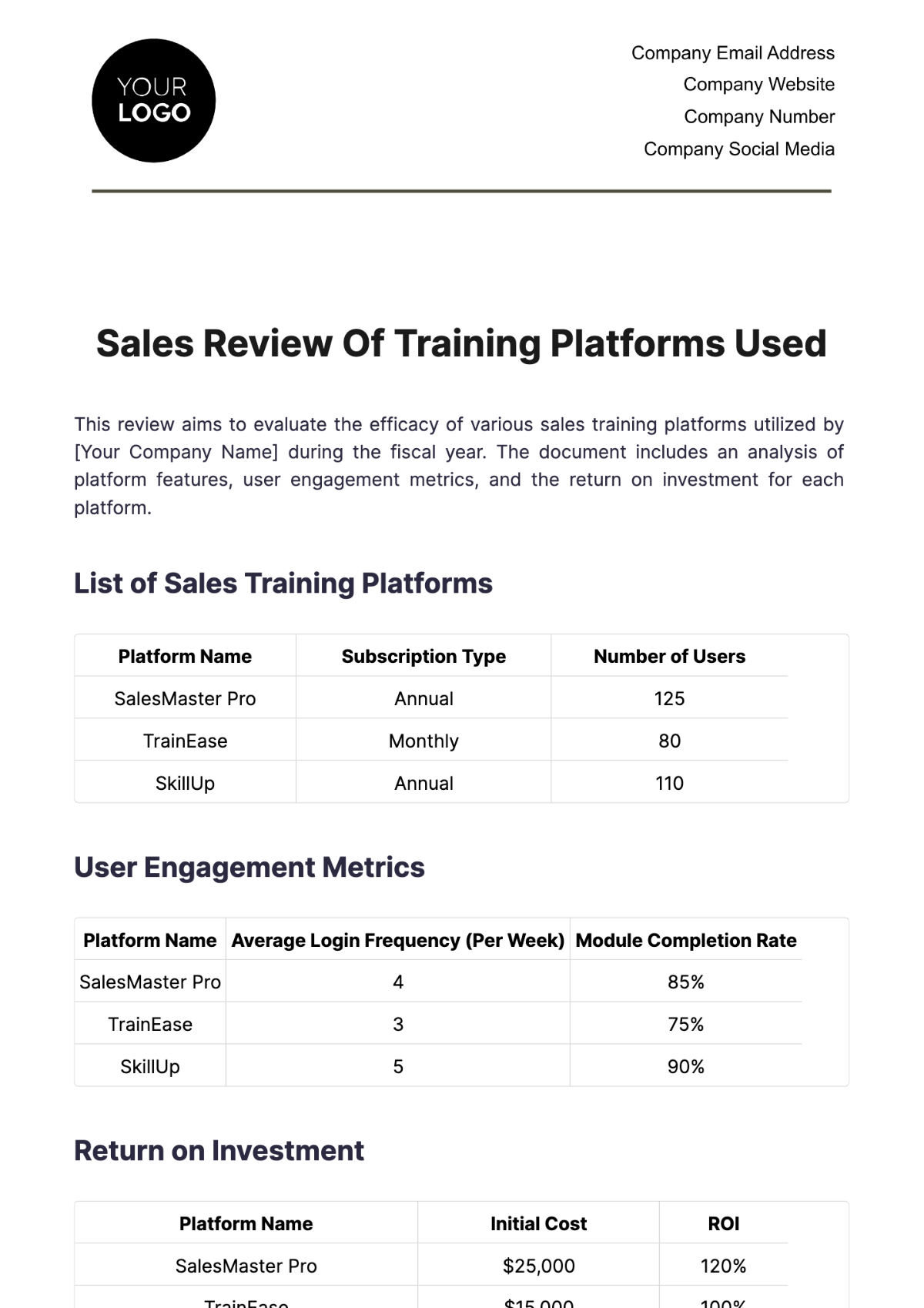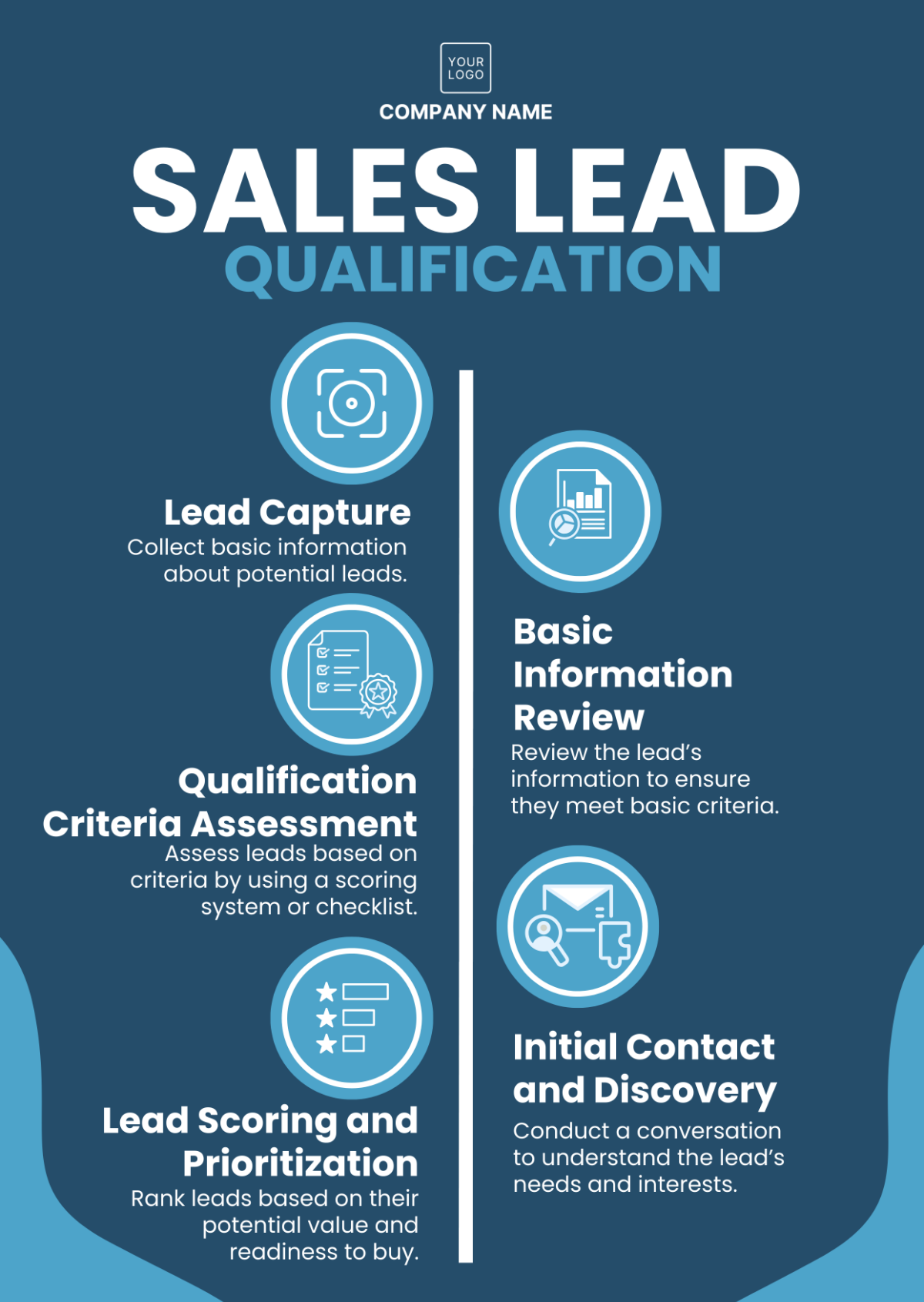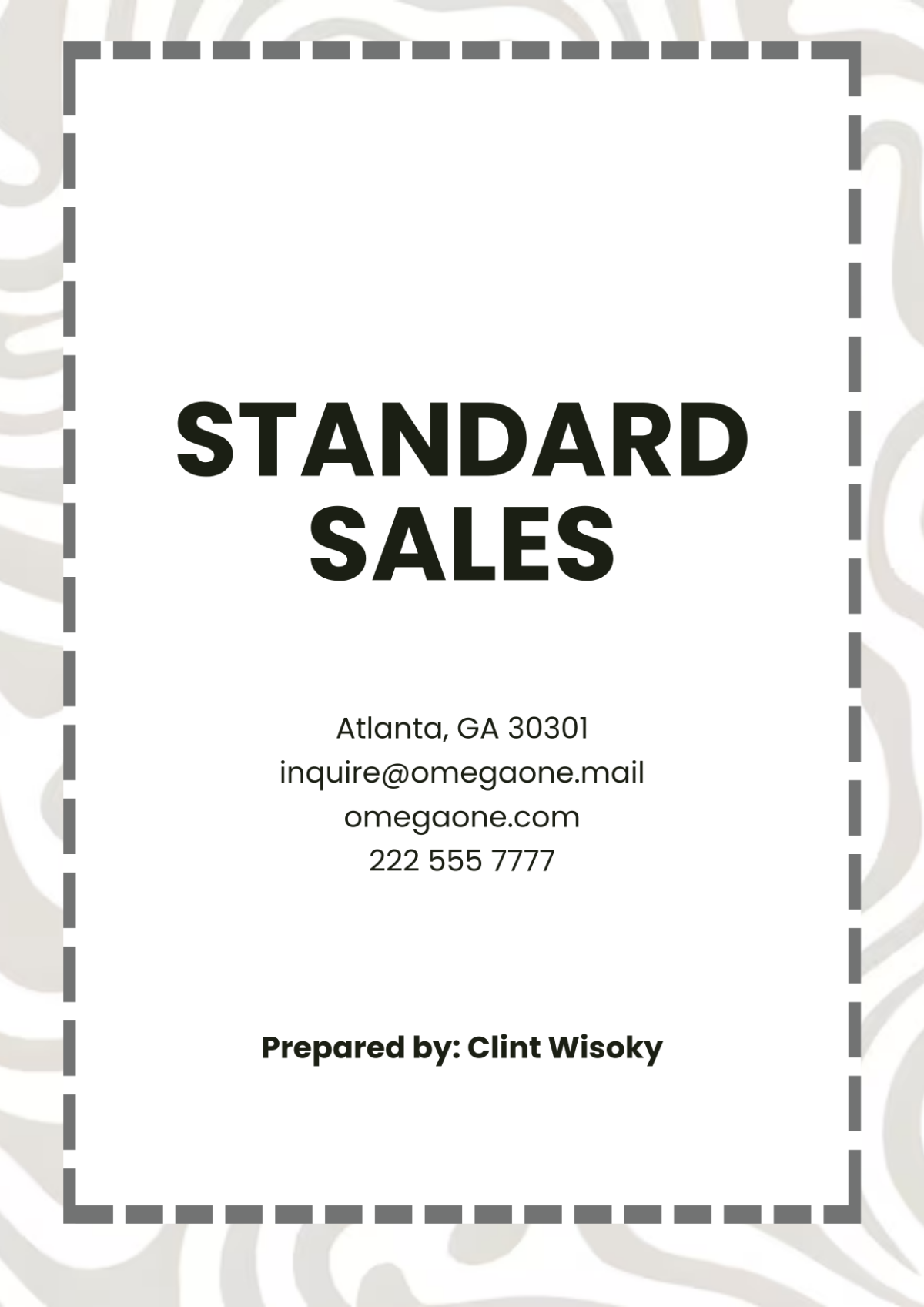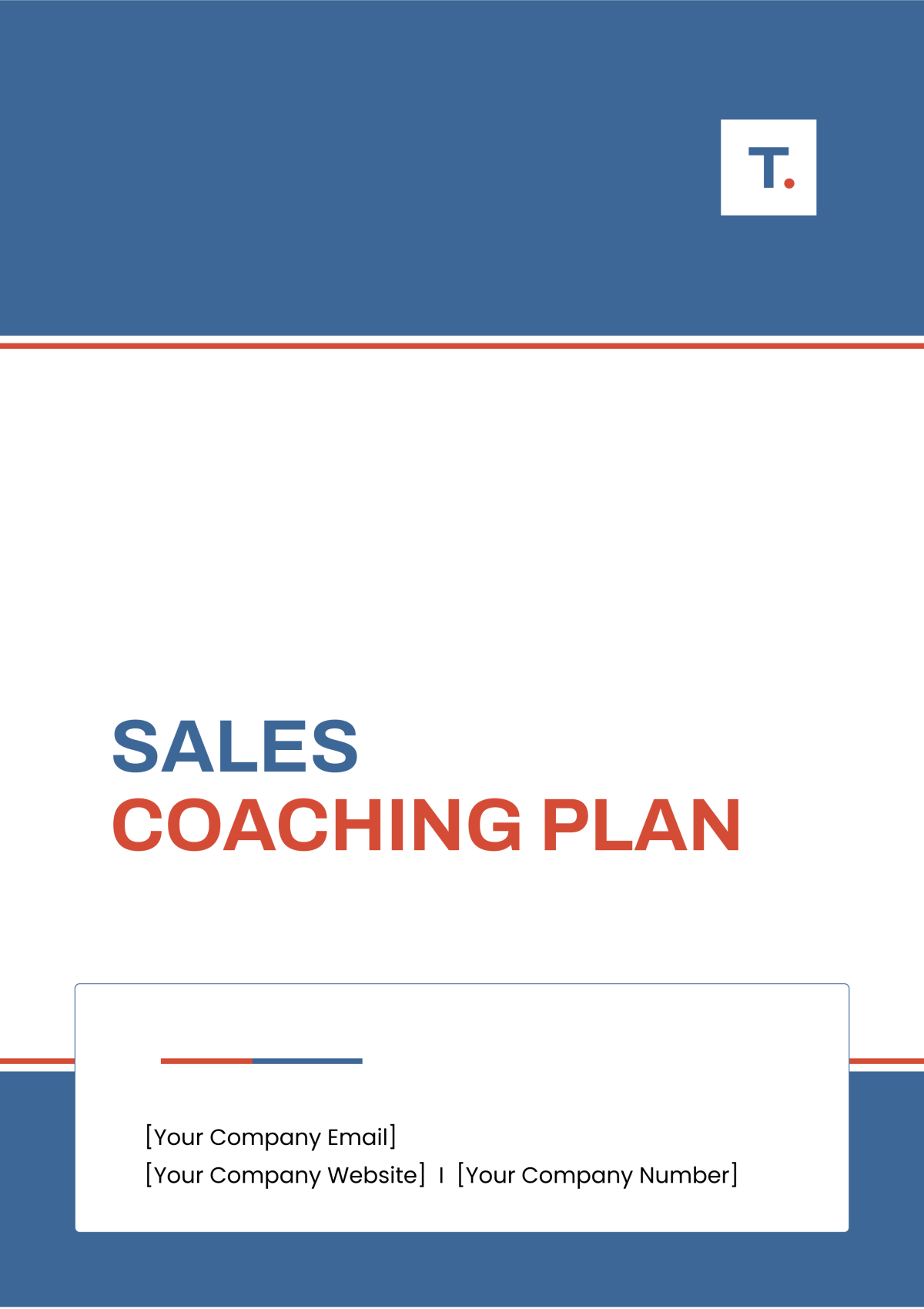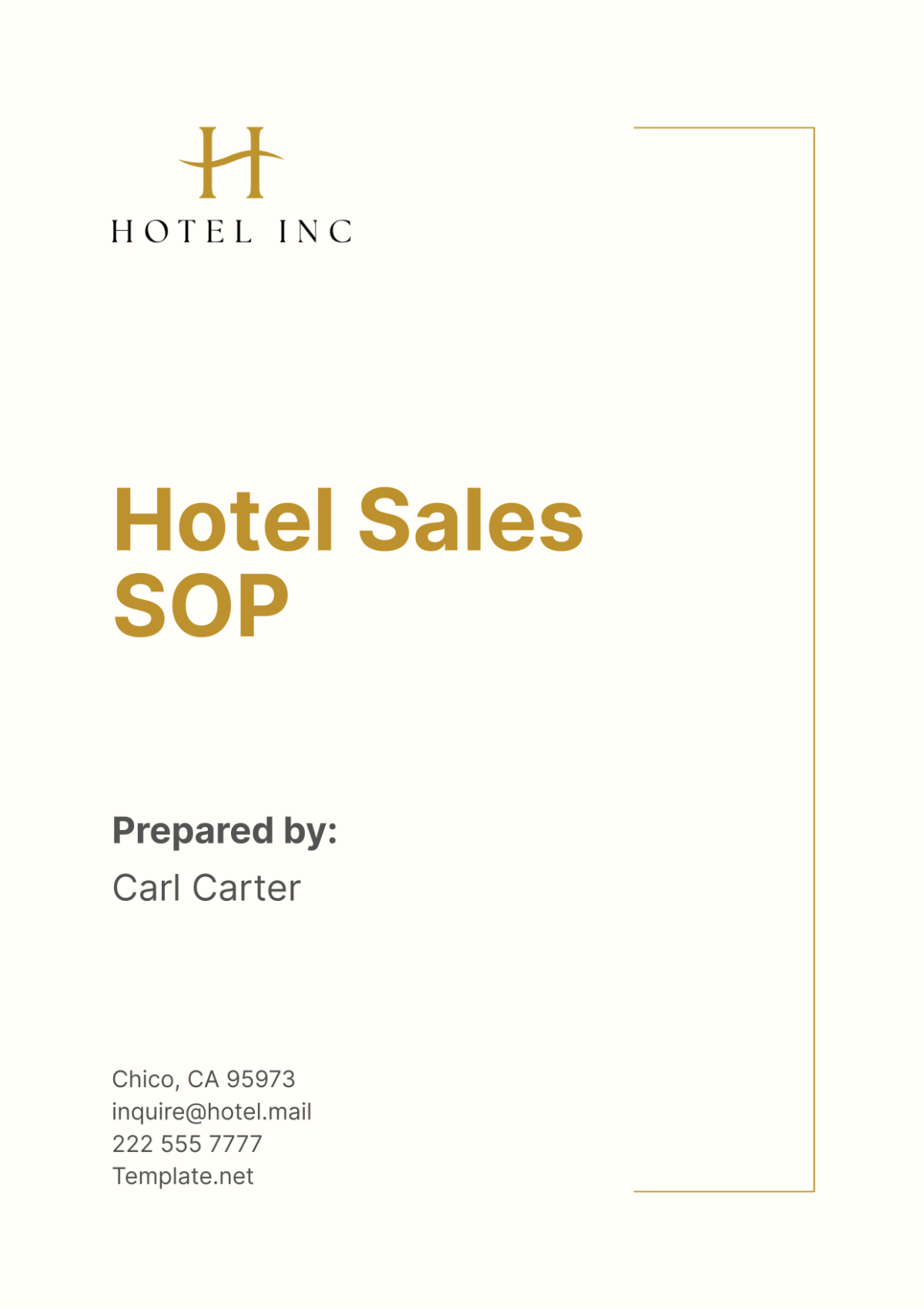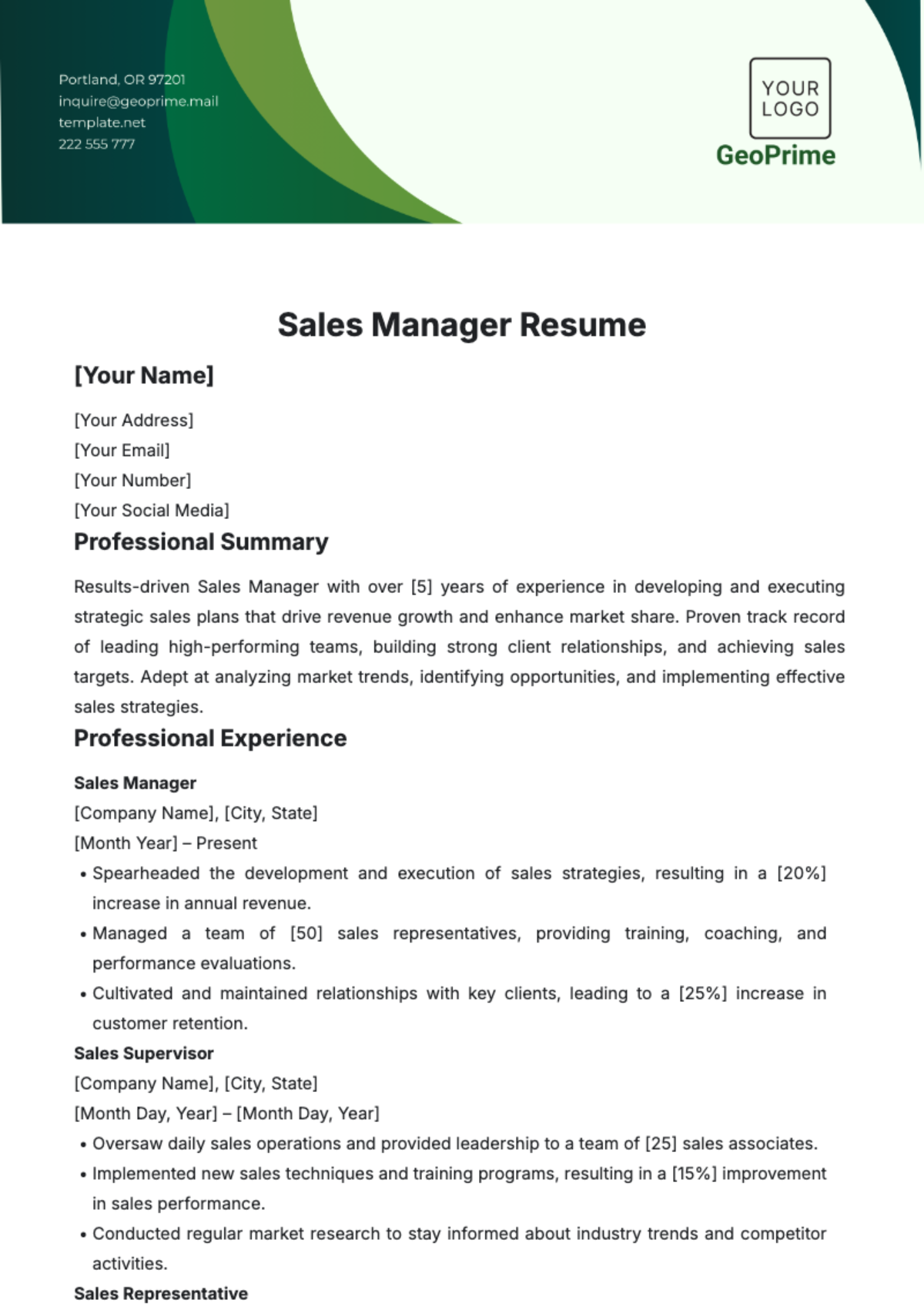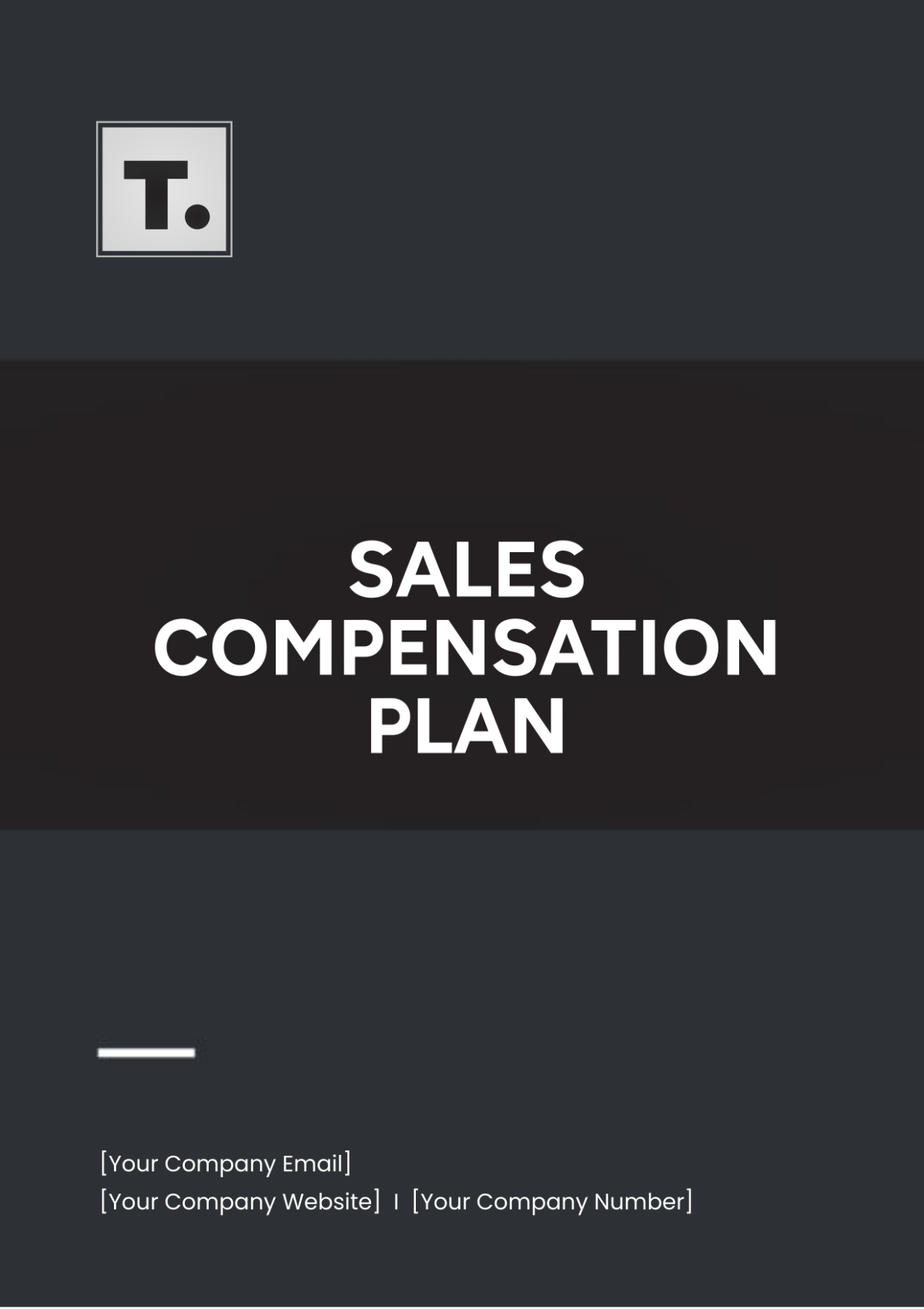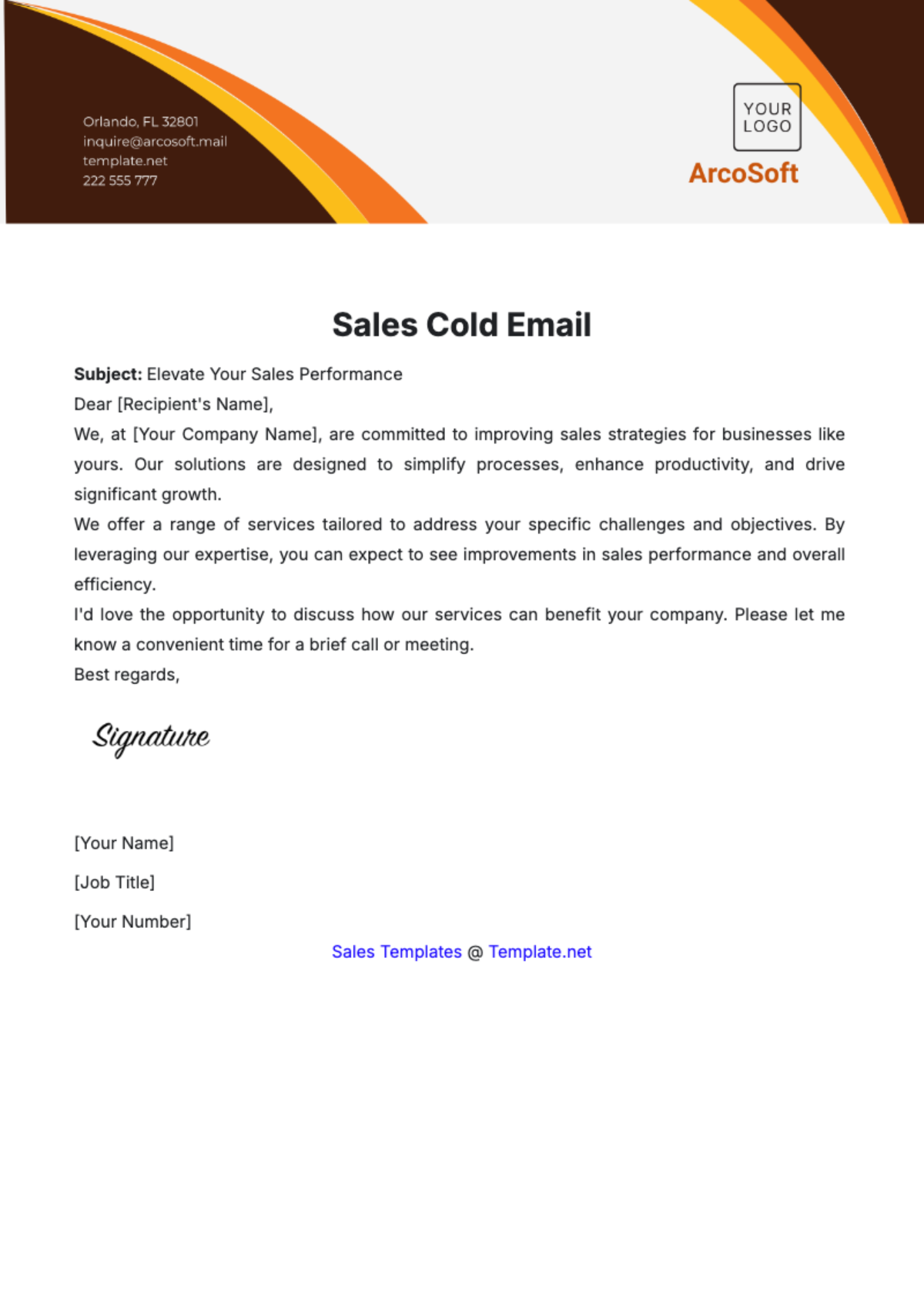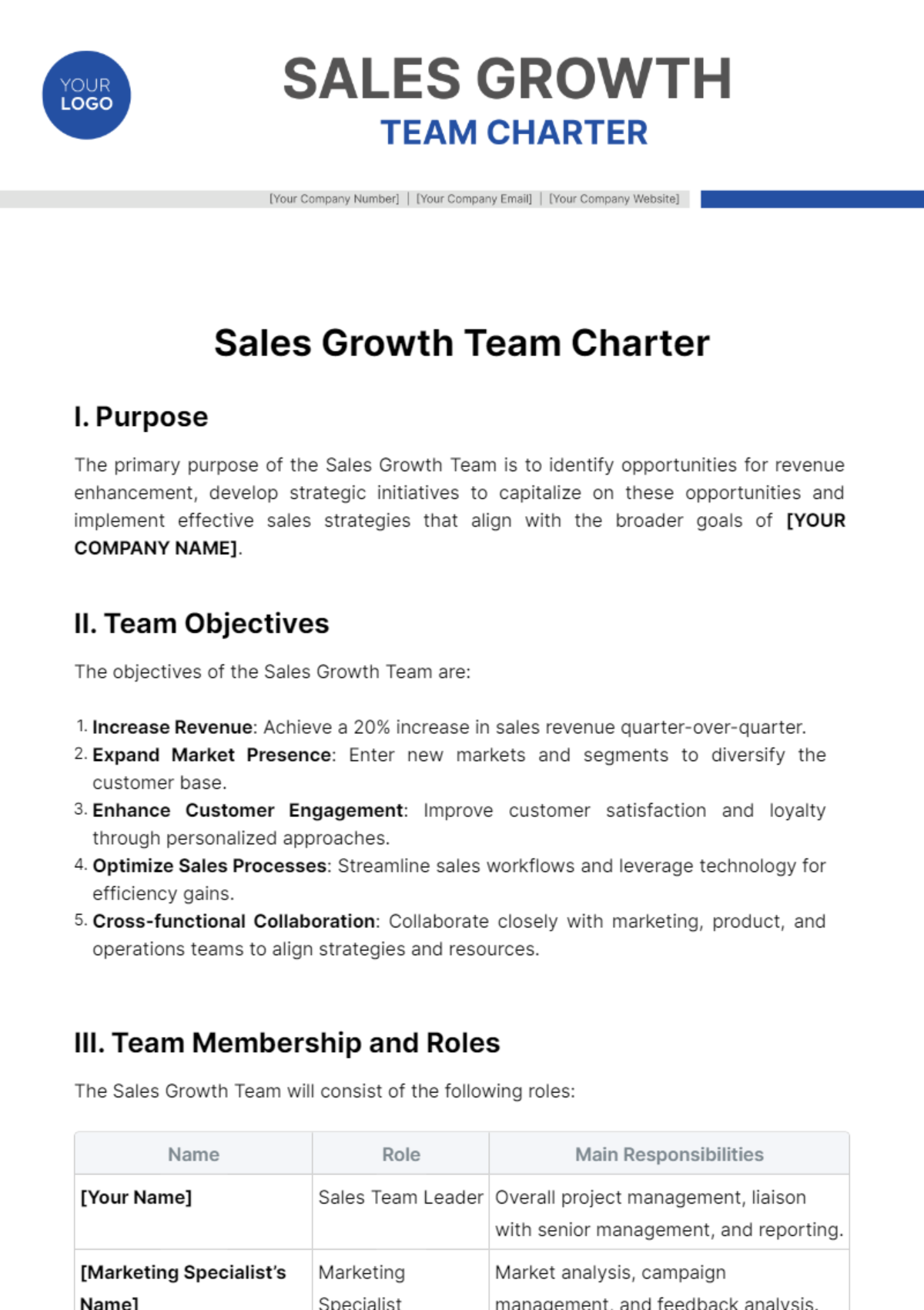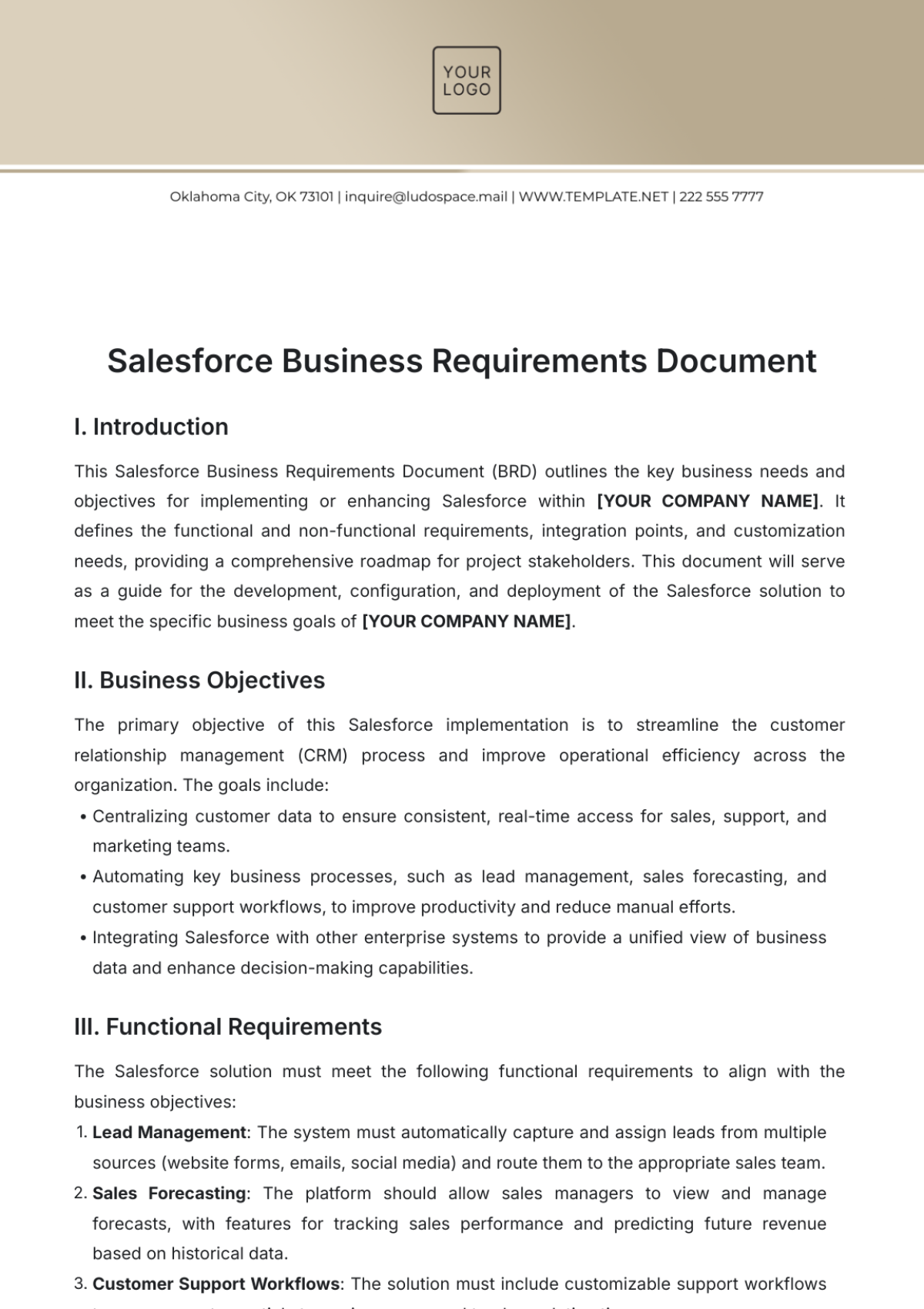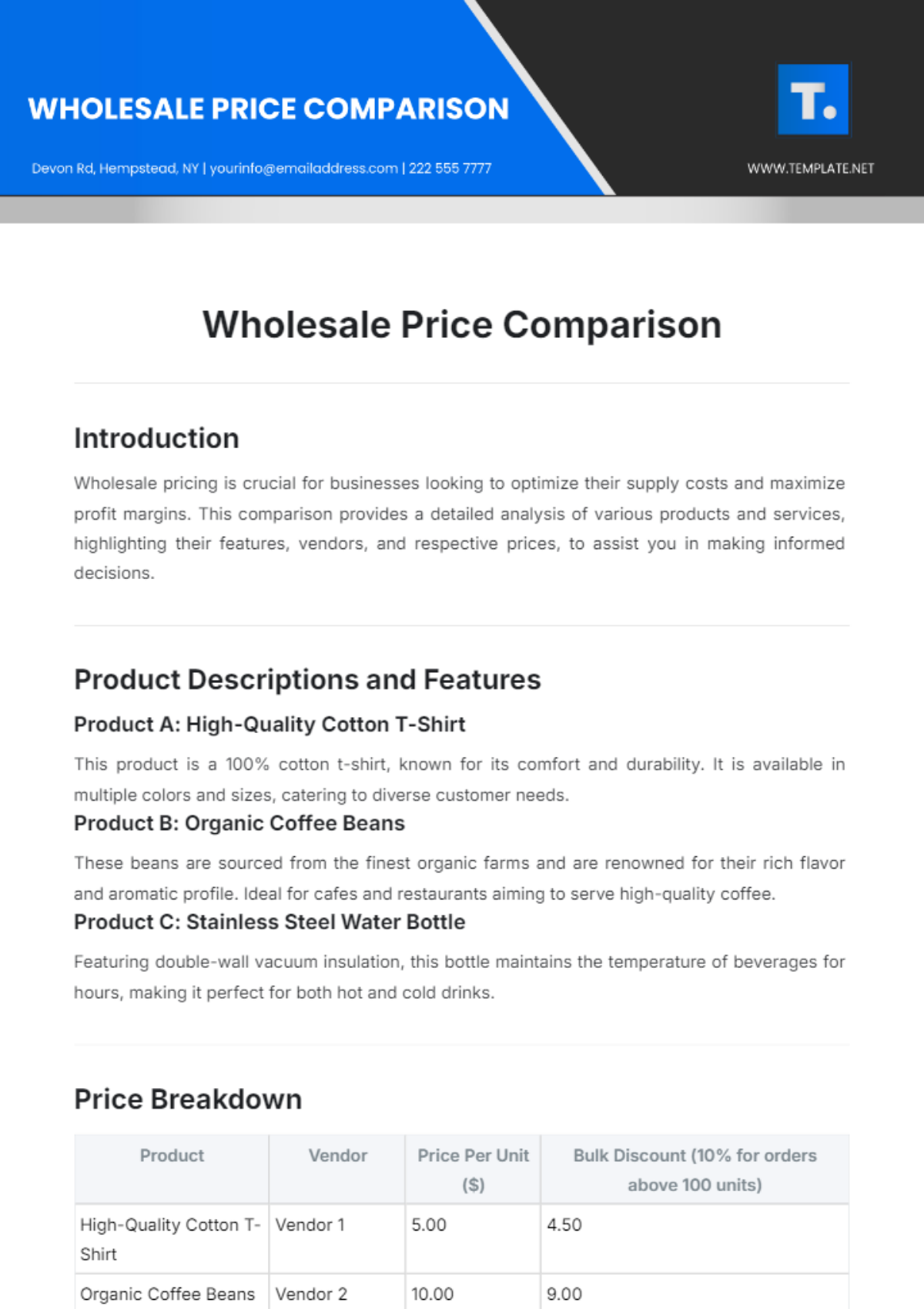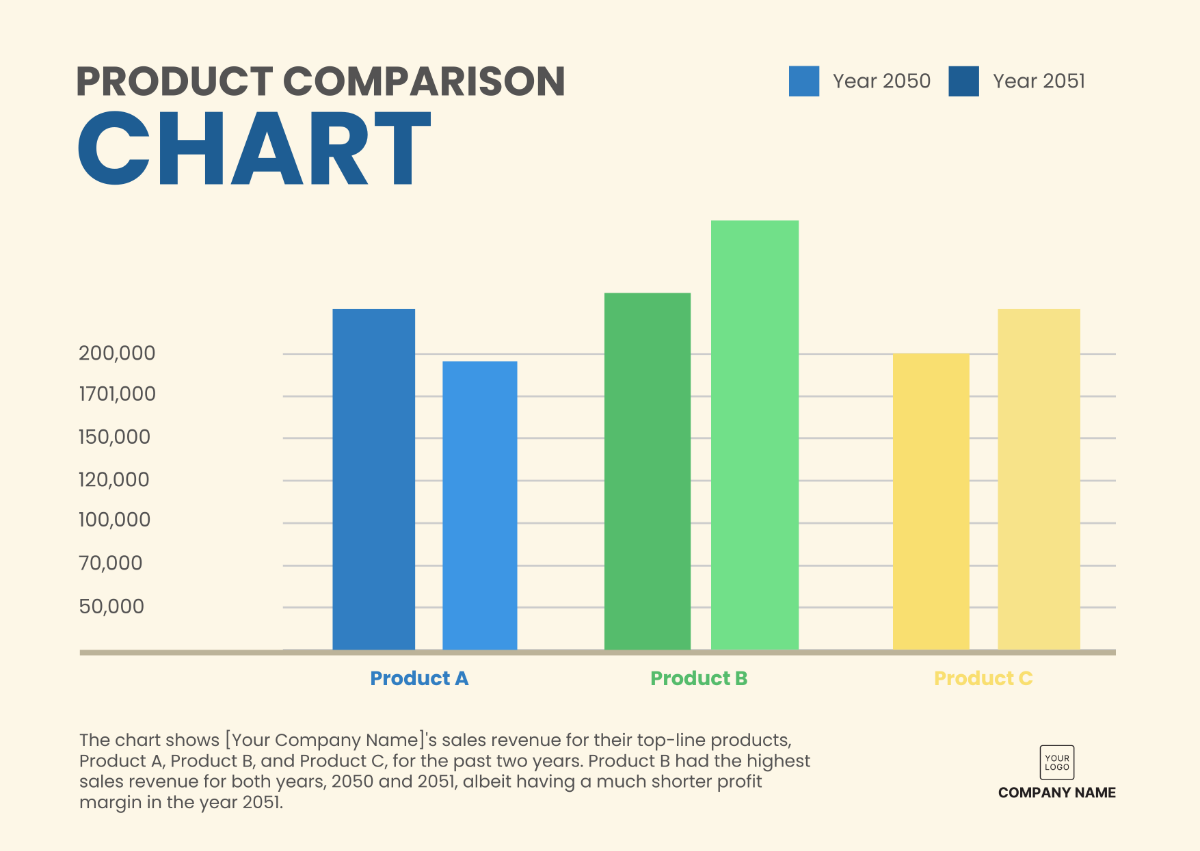Sales Document On Trade Show Logistics And Coordination
I. Introduction
Trade shows serve as a dynamic platform in the business landscape, offering opportunities for companies to gain visibility, nurture customer relationships, and drive sales. In today's competitive environment, [Your Company Name]'s presence at these events is more than just setting up a booth; it's about creating memorable experiences for attendees, stakeholders, and potential investors.
To accomplish this, meticulous planning, logistics, and coordination are highly essential. This document delves into the strategies and protocols tailored for [Your Company Name], to navigate through the intricacies of trade show participation, ensuring that every effort translates to measurable business growth.
A. Our Commitment to Excellence
[Your Company Name] is a dynamic and innovative talent acquisition company that excels in sourcing, selecting, and securing the brightest minds for businesses across various industries. We stand by a commitment to excellence that permeates every facet of our operation.
B. What Sets Us Apart
There are many talent acquisition companies worldwide, but [Your Company Name] is known to be one of the best in the industry for more than a few reasons. During the trade show, employees and representatives must define why people should choose [Your Company Name] over the others.
Expertise: Our team comprises seasoned professionals with in-depth knowledge of diverse industries, allowing us to identify and engage with the right talent for your unique needs.
Customized Solutions: We understand that no two organizations are alike, and we tailor our approach to match your distinct requirements, ensuring a perfect fit.
Cutting-Edge Technology: We harness the latest tools and technologies to streamline the talent acquisition, making it efficient and cost-effective.
Ethical Practices: We uphold the highest standards of ethics, trust, and transparency in all our interactions.
Global Reach: With a global network, we can source talent worldwide, enabling you to meet your specific demands.
II. Executive Summary
Trade shows remain a pivotal strategy for businesses to engage directly with their target audience, foster industry connections, and outpace competitors in product awareness. For [Your Company Name], maximizing the benefits of trade show participation requires a detailed and efficient logistics and coordination approach. This document outlines a strategic roadmap tailored for the company to ensure that every aspect, from booth design to staff training, is handled precisely, ultimately leading to a successful event outcome.
III. Pre-Event Planning
A well-structured pre-event plan is the foundation for a successful trade show. It sets the direction, allocates resources, and ensures that the organization is adequately prepared for the event.
A. Objectives and Targets
Identify clear, measurable objectives for the trade show. Whether it's generating a specific number of leads, unveiling a new product, or increasing brand visibility, having set targets allows for focused efforts and post-event evaluations.
B. Budget Allocation
Draft a comprehensive budget that includes everything from booth design and construction to promotional materials and staff training. Factor in potential unforeseen expenses and set aside a contingency fund.
C. Booth Design and Strategy
The booth is the company's physical representation at the trade show. It should not only be visually appealing but also functional and reflective of the brand's values and objectives.
D. Marketing and Promotions
Develop a marketing strategy to create buzz around the company's participation. This could include pre-event promotions, social media campaigns, and collaborations with influencers or partners.
IV. Timeline and Coordination
A detailed timeline ensures that preparations progress smoothly and that all teams are synchronized in their efforts. Regular check-ins and updates will ensure that everyone is on track. The table below showcases for the year 2050:
Milestone | Start Date | End Date |
Initial Planning and Objectives Setting | January 1, 2050 | January 10, 2050 |
Booth Design & Construction Conceptualization | ||
Finalization of Booth Design | ||
Staff Training | ||
Promotional Material Production & Marketing Launch | ||
Final Preparations & Review | ||
Shipping & Transportation of Materials |
V. Staffing and Responsibilities
Trade show success is largely contingent on the team's ability to efficiently execute their roles. Proper staffing ensures that each aspect of the trade show is managed effectively, from booth setup and operations to attendee engagement and follow-up.
A. Roles and Assignments
Booth Manager: Tasked with orchestrating the overall booth experience, the Booth Manager plays a pivotal role in ensuring seamless booth operations. Their responsibilities encompass managing staff rotations to guarantee constant booth presence, cultivating relationships with event organizers for any required coordination, and adeptly navigating any unforeseen challenges that may arise on-site.
Sales Representative: Serving as the direct interface between [Your Company Name] and event attendees, the Sales Representative is crucial for forging meaningful connections. Their role involves actively engaging with attendees to foster interest, delivering compelling product demonstrations tailored to the audience's needs, efficiently collecting and cataloging lead information, and communicating immediate, vital feedback to the management team.
Logistics Coordinator: Ensuring that every piece of the puzzle is in its rightful place, the Logistics Coordinator is responsible for the tangible aspects of the trade show. Their purview includes the efficient transport of materials and displays, ensuring punctual deliveries in line with event timelines, liaising with third-party vendors for any equipment or service needs, and overseeing the meticulous setup and teardown procedures to maintain the company's professional image.
Marketing and PR Lead: Amplifying the company's presence before, during, and after the event, the Marketing and PR Lead steers the brand's narrative. Their responsibilities encompass spearheading pre-event promotional activities to generate buzz, managing consistent and impactful on-site branding efforts, forming connections with media representatives for extended coverage, and utilizing analytics tools to gauge the effectiveness of various marketing campaigns.
Customer Relations Expert: Dedicated to nurturing [Your Company Name]'s relationship with potential clients and attendees, the Customer Relations Expert acts as a bridge between the company and its audience. Their primary tasks involve addressing any product or company-related queries, assimilating feedback to understand attendee perceptions, orchestrating timely post-event follow-ups to maintain momentum, and employing strategies to nurture and deepen relationships with potential clientele.
B. Staff Training
To ensure that all staff are well-prepared and aligned with the company’s objectives, a series of training sessions will be held. Topics will cover product knowledge, brand representation, effective communication skills, and handling unexpected scenarios.
C. Coordination and Collaboration
Effective coordination among staff is crucial. Daily briefings during the trade show will ensure that everyone is updated on the day's objectives, feedback from the previous day, and any changes in strategy or roles.
VI. Post-Event Analysis
Gathering insights and reflecting upon the trade show experience is a crucial step in refining [Your Company Name]'s future participation strategies. This section will delve deep into the evaluation metrics, feedback assimilation, and formulation of actionable insights.
A. Key Metrics and Outcomes
Measurable data provides a tangible reflection of the event's success. The following table presents a connection of targeted outcomes versus the actual results achieved:
B. Attendee Feedback and Impressions
Feedback from attendees provides invaluable insights, painting a vivid picture of [Your Company Name]'s performance from an external perspective. To harness this feedback, comprehensive surveys should be conducted post-event. The aim of these surveys is to discern perceptions about:
Understanding the attendees' take on the booth's visual appeal and its practical functionality.
Gauging how attendees felt about their interactions with our team regarding approachability and expertise.
Evaluating the clarity and effectiveness of product demonstrations and the distribution of product-related information.
Assessing the collective impression that [Your Company Name] left on attendees during the trade show.
C. Lessons Learned and Recommendations
Trade shows, being dynamic events, always present avenues for introspection and growth. Reflecting upon this particular event, some salient observations are:
Strengths Identified: Some facets of our participation resonated well and showcased our potential, which we should endeavor to maintain or even enhance in subsequent events.
Opportunities for Refinement: Certain elements have not met our expectations or those of the attendees, indicating areas that warrant recalibration or enhancement.
D. Action Plan for Future Trade Shows
Informed by the feedback and introspection, a structured plan will be formulated to ensure continual improvement in our trade show participations. This plan will encompass:
Lead Engagement: Systematic and personalized follow-ups with leads garnered during the event to cultivate potential business relationships.
Staff Development: Curating training sessions to bolster the skills of our team, ensuring that they are equipped to represent [Your Company Name] in the best light.
Enhancement Strategies: Defining actionable steps to address identified areas of improvement, ensuring a more refined presence in subsequent events.
Leveraging Strengths: Initiatives focused on augmenting aspects where we showcased pronounced strengths, capitalizing on them for future events.
By systematically analyzing the event's outcomes and assimilating feedback, [Your Company Name] can continually refine its trade show strategy, ensuring that each event is more successful than the last.
VII. Conclusion
Trade shows present valuable opportunities for [Your Company Name] to advance its market position. Proper logistics and coordination, from pre-event planning to post-event analysis, are vital to maximize these opportunities. As [Your Company Name] continues to participate in trade shows, a consistent and structured approach will ensure each event's success.
